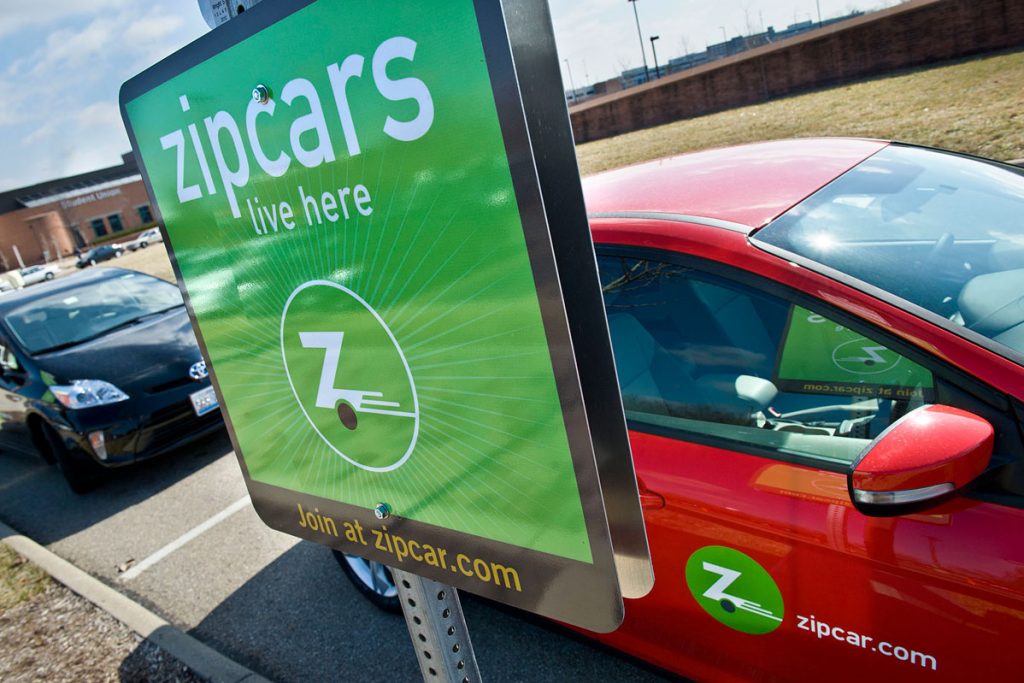Zipcar has a history even before the car-renting businesses were not even that common. Built by two moms, the idea at the time was unique, and it was their passion that made it successful in just a few months.
Zipcar is an almost 2 decades old company, founded in the year 2000, by Antje Danielson, a Harvard geochemist and Robin Chase, a stay-at-home mom and an MIT business school graduate. The two ladies met each other at their children’s kindergarten, in Cambridge, Massachusetts. Both were struggling financially, as Chase had left her job due to the birth of her first child and Danielson was the only working member in her family.

But as the time was passing both of them wanted to make use of their studies, and as a business graduate, Chase has expressed her desire to start a business with Danielson. Danielson was on the same track and had studied about Switzerland’s Mobility Cooperative, and shared the idea of starting a similar technology based car-rental company, in the US, with Chase. Chase also liked the idea, but it was a big project that included a huge risk. So both talked to their husbands and got the approval for the business.
Finally, in January 2000, both started their car-rental business, Zipcar. Zipcar provided the automobile reservations to its members through charging them a monthly or annual fee. Before incorporating the company, the two had already raised investments for its launch of around $75,000 in startup financing. After they launched the startup, Chase held the position of the president of Zipcar and Danielson became the vice president of the company.
The first rental car from Zipcar went onto the roads in May 2000, and in just three-four months it registered over 600 customers for the service. The company was doing well, but the two co-founders were not going along too well. In 2001, Robin Chase fired Danielson, after Chase petitioned Zipcar’s board for the ability to make hiring and firing decisions without consulting them.
The fire of the co-founder did not impact the company much, and it kept on expanding in New York City and Washington DC. Even the company was expanding, it was unable to secure more funding, and as a result, the board of the company replaced Chase as the CEO of the company with Scott Griffith. Within two years the company was able to raise $10 million in funding led by Benchmark Capital. In the same year, a new office was opened in San Francisco, following by another office in Toronto in the next year. The establishment of Toronto led to the fastest growing market in Toronto for Zipcar.
In late 2006, the company reached London, and in 2007, Zipcar opened an office in Vancouver. In the same year, in the month of October, the company had a merger with Flexcar. After the merger, the company earned over 225,000 members, double the number of the member it had in the previous year.
In June 2009, the company launched its iPhone app, with the features like honking the horn and unlocking some Zipcars. In April 2010, Zipcar acquired the London-based car-sharing club Streetcar.
In 2013, Avis Budget Group acquired Zipcar. In 2014, the company opened its offices in Houston, Dallas TX regions, Greater Toronto and Hamilton, Ontario. In the same year, the company also extended to Paris, France and Madrid, Spain. Zipcar also launched its floating car-sharing service in Brussels, Belgium, in 2016.
Zipcar offers the car rental service for over fifty different car models, even including the luxury car models like Audi and BMW. The company headquarters still remains in Boston, Massachusetts and it has raised to over 500 employees.
The reason behind the success has been that it started through word-of-mouth promotion and had invested well in the technology. The business idea was simple and was based on customer feedback. So in the past two decades, it has grown in a phenomenal way. Even it has been more than a decade for the two co-founders left the company, Zipcar had its own success story. And, the success story of Zipcar shows us that keeping things simple and targeting customer satisfaction is the key to success.

Yashica is a Software Engineer turned Content Writer, who loves to write on social causes and expertise in writing technical stuff. She loves to watch movies and explore new places. She believes that you need to live once before you die. So experimenting with her life and career choices, she is trying to live her life to the fullest.